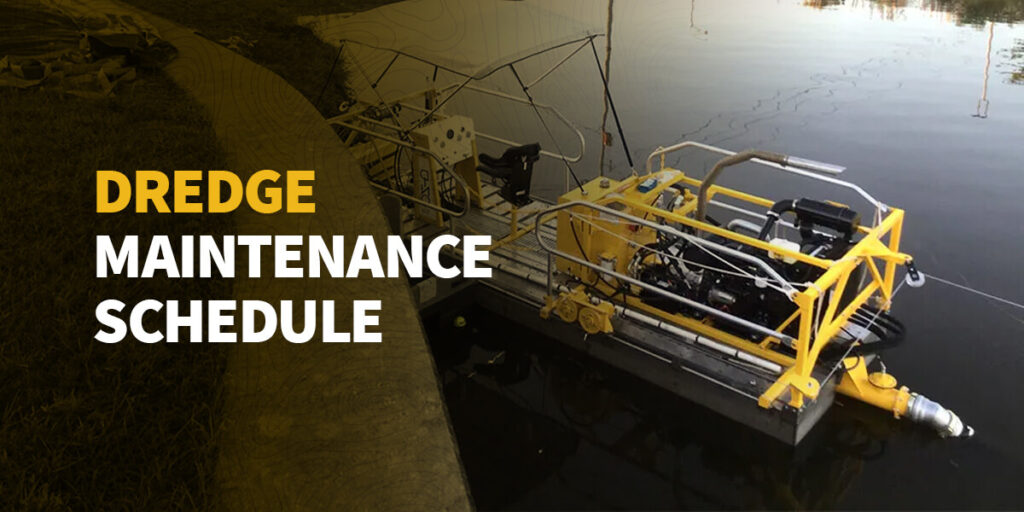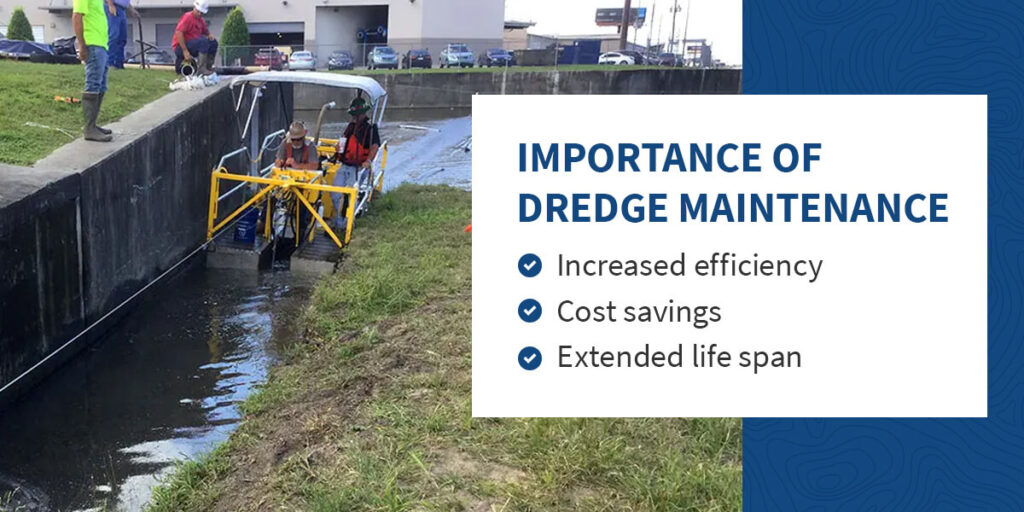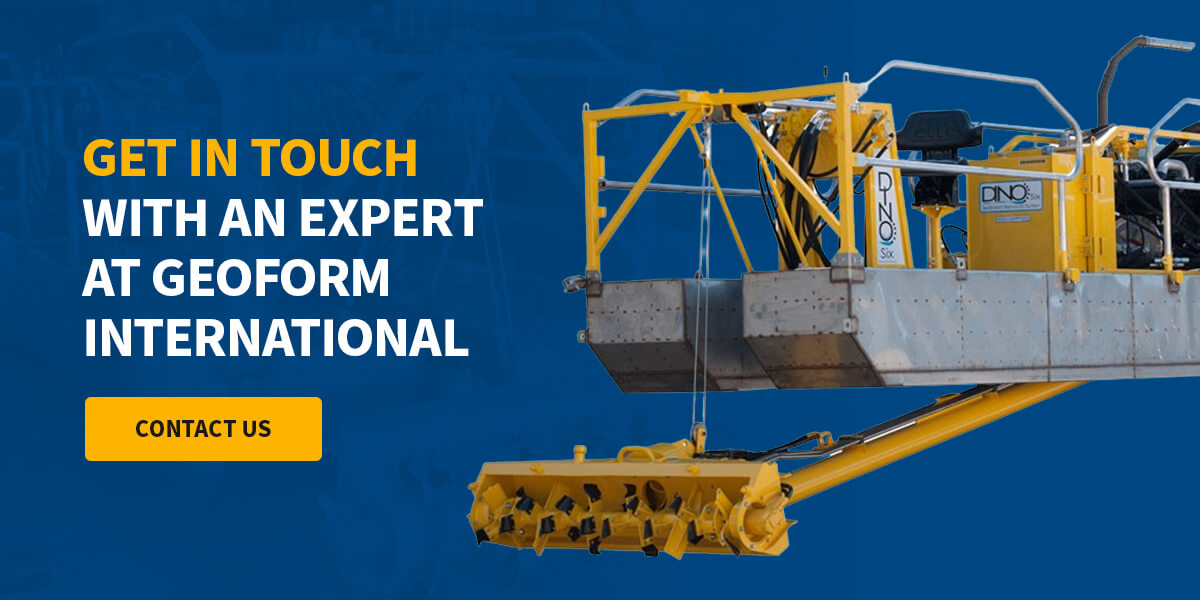Dredges provide vital services for a wide range of industries. During dredging, the equipment removes unwanted sediment from the bottom of lakes, rivers, ponds and other bodies of water. These machines assist with the safe passage of ships, protect aquatic life from contamination and reduce the effects of erosion.
Dredges must work at proper efficiency levels to meet these demands. From oil levels to fan belts, dredge features need regular care and maintenance. You should follow a dredge maintenance schedule to keep your equipment in its best shape. These guidelines remind you to check dredge components at the correct intervals.
Learn more about creating a dredge service schedule and how GeoForm International can help.
Importance of Dredge Maintenance
Dredges are essential tools for clearing waterways. These machines suck up and pump out excessive sediment and debris from bodies of water. You need to follow a dredge maintenance schedule for these tools to work properly.
Regular maintenance has many benefits for your dredges, such as:
- Increased efficiency: Preventive maintenance can help you maintain efficiency by keeping your equipment in good condition. And the better your equipment’s shape, the easier it becomes to stay on schedule with projects and meet deadlines. With a dredge maintenance schedule, you can solve small problems before they grow into larger ones. That way, you can provide continuous services and complete projects on time.
- Cost savings: Dredge maintenance also saves you expenses in the long term. A consistent maintenance schedule allows you to address issues as they arise. Even minor issues can grow into complex and expensive problems. And the more significant the issue is, the more likely your equipment will experience downtime. Periods of downtime can cause you to miss critical deadlines and lose money. Instead, a regular service schedule can keep your equipment in top shape and prevent these complications.
- Extended life span: Regular dredge maintenance can also lengthen the life spans of your equipment. You can keep them in new condition even after extended usage. A dredge maintenance schedule reminds you to check all important components of machines, ensuring they stay in the best shape. By preserving their functionality, you reduce the need for costly replacements later.
Daily and Weekly Maintenance Tasks
One essential component of maintaining your dredge is consistency. Thorough dredge maintenance includes daily and weekly inspections for numerous components. You check these aspects each day or each week before operating the equipment. You can follow a schedule or checklist to ensure you inspect everything at the right time.
These are features you should check in your daily dredge service schedule:
- The general condition: Inspecting your dredge’s general condition before getting started is good practice. Make sure there aren’t any cracks, large scratches, missing components or other aspects that might affect its performance. You should also test the internal engine and ensure it can start normally. Look for any abnormal behaviors or sounds as you start the machine. Ensure all dredge components work properly and don’t make any strange noises or vibrations.
- Oil levels: Next, you should check motor oil levels daily. Inspect the oil’s quantity, temperature and pressure and ensure it’s at the right levels for operation. In addition, make sure there aren’t any leaks around the area or foreign objects within the oil.
- Coolant levels: You should also look at coolant levels in your dredge. Check that they are in sufficient quantity and move normally without any clogs.
- Bearing block and cutterhead: If you use a hydraulic dredge, it likely has a bearing block and cutterhead. These moving components are essential for dredge functionality. The cutterhead rotates, making lubrication essential. You should grease these features daily to ensure they can move properly.
Your preventive maintenance should also include weekly maintenance tasks like:
- Draining the water separator: The water separator separates oil and water mixtures into their components. Use the valve on the bottom to drain it weekly to release any water collected over the week.
- Checking the fan belt: Make sure the fan belt is in the correct position and tight.
- Checking the hoses: You should also inspect the hoses in the hydraulic system weekly. Look for signs of corrosion, damage, aging or movement. Reposition the hoses as necessary or replace those showing damage.
Hourly Maintenance Tasks
Additionally, you should complete some dredge maintenance tasks after using the machine for a certain number of hours. Here are some examples:
- After 100 hours: After 100 hours of use, you should change your dredge’s engine oil and filter. Use manufacturer recommendations for oil and filter types. You should also check your main dredge pump and ensure it’s in the best condition.
- After 250 hours: Once you’ve reached 250 hours of usage, you should replace the fuel and hydraulic oil filters. Check crucial components like the bearing block, impeller, cutterhead and pulleys for wear or damage.
- After 500 hours: At 500 hours, you should change the fuel filters again. Check all components for wear, corrosion, cracks or other signs of damage.
- After 1,000 hours: After 1,000 hours of use, get a more thorough check of your hydraulic oil quality. You can send a sample to ensure it doesn’t contain contaminants. If you find the presence of contamination, you should change your oil as soon as possible. In addition, examine pulleys, cables and safety decals. Replace or repair faulty components quickly.
Considerations for Your Dredge Maintenance Schedule
As you create your dredge maintenance schedule, it’s important to plan around your project specifications. Different environments and project requirements might cause you to alter typical maintenance recommendations.
For example, you might use your dredge in a particularly harsh environment. You could use it for extended periods and in tough conditions that put more wear on the equipment. In these cases, you should perform maintenance checks more frequently than the average recommendations. For instance, you might inspect major components after every 100 hours of usage. You can always consult experienced dredging service teams for specific guidance on maintenance necessities.
Get in Touch With an Expert at GeoForm International
Following a thorough dredge maintenance schedule is crucial for your equipment’s well-being. At GeoForm International, we understand the importance of high-quality dredging equipment. We provide top-quality pumping equipment and solutions for a wide range of industries.
Our durable and efficient pumping systems offer top performance for your dredging applications. Our Dino6 Dredge is cost-effective, portable and highly productive. Our dedicated customer service team can also assist you with dredging maintenance questions.
To get started with GeoForm International, contact us today.



